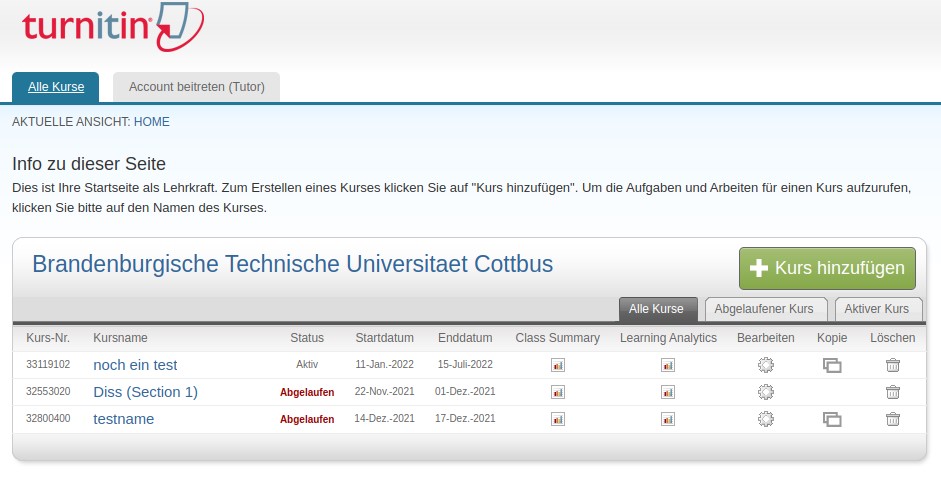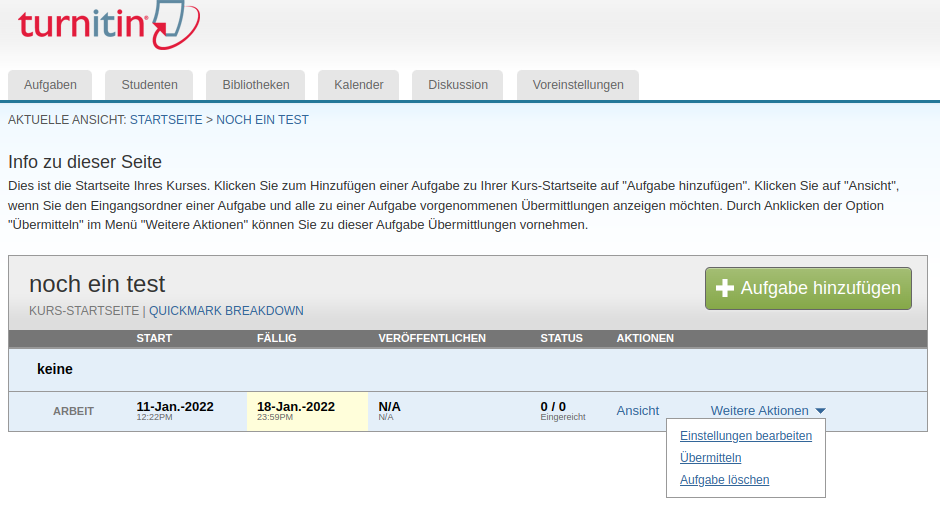Citing instead of Plagiarizing
How to Incorporate Outside Sources
All sources used must be fully identified so that they can be found and understood by other readers. Please observe the following customs of professional and academic writing culture:
- Literal quotations must be placed in quotation marks and the source must be indicated in parentheses at the end of the sentence useing the text and/or quote; this applies to terms, expressions, phrases and sections of text.
- If you paraphrase another text, i.e. reproduce the meaning in your own words, the source must be indicated in parentheses at the end of the sentence.
- At the end of your work you must include a complete list of all sources used (bibliography). This applies to almost all types of literature that you will deal with in the course of your studies with us (exception, for example, the essay).
- Sentences like ‘Immanuel Kant was an important philosopher of the Enlightenment’ are sentences that belong to the basic knowledge and do not have to be provided with a source.
- If you take a quotation from another author without checking the original source, it is a secondary source. This must also be cited.
(based on the Citation etiquette of ETH Zurich and the Honor Code of Stanford University)
How to do Citations
If you comply with the following rules, you can hand in your written work with a clear conscience.
- Always clearly distinguish between your own thoughts and the thoughts of others.
- Clearly cite all authors and paraphrased sources used in your text.
- List all sources used (Internet, pictures, tables, codes, data, graphics) in the bibliography.
- Observe the citation standards as required by the chair.
- Attach your signed declaration of independence.
Forms of Plagiarism
If an external work is partially or completely taken from a source or author without any citation or reference, this is deemed plagiarism. The University of Zurich’s student magazine defines plagiarism as when:
- The author submits a work created by another under his name (‘ghostwriting’).
- The author submits another work under his name (full plagiarism).
- The author submits one and the same work (or parts thereof) to various examinations or seminar occasions (self-plagiarism).
- The author translates foreign-language texts or parts of foreign-language texts and presents them as their own work without citing the translation source (translation plagiarism).
- The author uses parts of a text from an outside source without identifying the source with a citation. This also includes the downloading and using of text excerpts from the Internet (copy & paste plagiarism).
- The author uses text from an outside source, makes slight adjustments and changes to the text (paraphrasing) [either by him- or herself or in combination with rewriting software tools*], but does not identify the source with a citation.
- The author uses text from an outside source, paraphrases it if necessary, and provides a citation, but does not cite it in the properly corresponding part of the text (example: hiding the plagiarized source in a footnote at the end of the work).
(Christian Schwarzenegger & Wolfgang Wohlers. Plagiatsformen und disziplinarrechtliche Konsequenzen. Unijournal 4 (2006), S. 3) To the original text
* Addendum by the Chair of Technoscience Studies (as of March 5th, 2021) in the light of recent events.
Consequences of Plagiarism
Please see BTU Cottbus-Senftenberg rules and regulations under General Examination and Study Regulations (§ 20 (4)):
‘If a student attempts to influence his or her result by deception or use of inadmissible tools, if he or she is part of a deception or if he or she disturbs the orderly course of the examination or, if for the purpose of conscious deception of intellectual property of others is violated or published material of third parties is used without mentioning the sources or authors and submitted as own performance (plagiarism), the examination performance concerned will be graded “insufficient” (5.0) and the examinee can be excluded from continuation of the examination by the examiner. In severe cases or in case of reoccurrence the responsible Examination Board decides on the loss of examination right.’
The Statue for Safeguarding Good Scientific Practice at the BTU Cottbus-Senftenberg as of 2 March 2018 is to ensure that good research practices are observed by both scientific staff and students.
What Happens After an Attempt at Plagiarism is Detected?
- The student will be asked to sit for an interview with the seminar leader or professor.
- The student is told that he or she has plagiarised and is attempting to deceive. The interview is recorded.
- The work is given a grade of 5 (insufficient).
- The grade is passed on to the student service, including the note ‘attempted deception’.
- The process is reported to the responsible examination board.
Plagiarism check with Turnitin - Step-by-step instructions Ingmar Lippert, January 2022
1. Request
Email software(at)b-tu.de and request an account to review the submitted papers.
2. Log in and create course
Log in to Turitin with your email address. If necessary, select the “Forgot password” option to reset it and request a new password.
On the home page, you can add a “Course” (green button on the right side of the browser). The data entered for name, department, teaching level, etc. seems to be irrelevant for the evaluation. [1] An enrollment key does not have to be assigned.
3. Create task
Before you or your students can submit a paper, you must first create an “assignment”.
In the "Optional settings" you can, for example, exclude bibliographic material or citations from the analysis. This can help to reduce the number of falsely detected similarities.
5. Wait
The assignment is now being analyzed. This may take a while therefore plan a total of half a working day of analysis time for a dissertation.
Manual checking is relevant because in the default setting Turnitin finds up to 15% similarities even in non-plagiarized work. For example, pay attention to matches that refer to titles of texts, notice whether Turnitin observes quotation marks placed by students. Among other things, we observed that literature references, citations block, quotations, and title formulations were detected as being plagiarized.
The picture below shows an example of a detected similarity, which illustrates how context-less Turnitin perceives similarities: the student work makes explicit at which faculty and university the work was submitted. Now, university names “University of” and faculty names are similar in many places and many publications, so no plagiarism is perceptible here.
Another example could be found in the picture below. In the phrase:
Although Morrison disregards the grand narrative view of this specific era, he offers a different set of tools to define the relationship between science and technology in an indistinguishable interconnected relationship with one another.
Turnitin detects the : „science and technology […] relationship with one another“ as potentially plagiarised from Paul Forman (2007, S. 21)[2].
Forman (2007) [2] wrote in his work:
As previously with Marx, we see here once again with Veblen the helpfulness of the distinction between rank and role—between the ‘absolute’ rankings of science and of technology on scales of cultural values and the ‘relative’ roles of science and technology
Text written by Dr. Ingmar Lippert
[1] Speculation: By filling those fields, we may be providing Turnitin with information that the company uses internally to optimize algorithms or the business model.
[2] Paul Forman (2007): The Primacy of Science in Modernity, of Technology in Postmodernity, and of Ideology in the History of Technology, History and Technology: An International Journal, 23:1-2, 1-152.
Scientific work with AI
BTU offers the AI-Chat-Assistent BTU.HAWKI for use of ChatGPT and some Open Source LLMs. These services are available here: https://www.b-tu.de/ikmz/chatbot. The interface can be switched to English in the settings.
Further information about the service, such as the terms of use and FAQs with references to corresponding support and training offers, are available. The test phase is initially planned to run until May 31, 2025, to assess user experiences which will be later surveyed online.
How to work with ChatGPT?
As a student, you can integrate a chatbot into the writing process for certain assignments. It is important to note, however, that this does not involve copying and pasting text from the chatbot. Instead, you should have to engage in a thoughtful process of iteration not only with the chatbot but also with other sources of information and knowledge used in your assignment. The proposed integration of a chatbot in the learning process involves testing classroom material without overshadowing your role as a student and the role of educators. Below we propose a way to include ChatGPT in class based on an iterative process inspired by Canadian scholar M.Liboiron. Here is a breakdown of the steps that you can follow in our courses:
- Begin with relevant questions: Start by asking the chatbot questions related to your essay topic. This initial interaction can help you gather preliminary information and insights from the chatbot.
- Analyse information and arguments: After receiving responses from the chatbot, carefully analyse the validity of the information and arguments presented. Check for logical consistency and supporting evidence. At this stage, you can use external sources to enhance your understanding and validate the chatbot's claims.
- Ask further questions: Based on the chatbot's responses and your use of external sources, ask further questions that aim to explore and analyse the information given by the chatbot and your argument in greater detail and with a critical approach.
- Continuous assessment: continuously assess the chatbot's answers. Use the same external sources or find additional ones to verify and cross-reference the information from the chatbot.
This iterative process of questioning, analysing, and refining your ideas will guide you in a meaningful dialogue with the chatbot. That way, we believe that there will be more chances for you to find errors in the assertions produced by the chatbot. While these chatbots are improving speedily, it still can be said that the longer the response, the more likely it is for ChatGPT to contradict itself, lack logic, and display incoherence (Houston and Corrado, 2023; Mills, 2023). Moreover, as the argumentation becomes more complex, it is also possible that the claims and reasons given by the chatbot, even if valid, lack sophistication in terms of the connection with evidence and warrants. These are basic elements of argumentation that have to be considered in connection with each other (see e.g. Booth et al., 2008). So, before using ChatGPT, it would be convenient for students with less experience to be introduced in the topics of argumentation and critical thinking.
This approach of incorporating ChatGPT can be used, for example, in conjunction with the "article review" assignment presented in the course "How to talk about 'nature'?". The assignment requires writing a summary and critique of a given text. If the summary and the critique involve an interaction between the student and the author of the text, ChatGPT may mediate between these two key figures for this activity. In this way, the activity has three elements to consider: author of the text being reviewed, the student (and its sources) and ChatGPT. Students should always keep in mind that instructors should be able to easily distinguish between the reasoning of the paper's author, the logic generated by the chatbot, and the own unique perspective of each student doing the assignment. These three elements are distinct and should be clear in the work.
written by Dr. Francesc G. Rodríguez
Booth, W. C., Colomb, G. G., & Williams, J. M. (2008). The Craft of Research. Chicago University Press. Third Edition.
Houston, A. B., & Corrado, E. M. (2023). Embracing ChatGPT: Implications of Emergent Language Models for Academia and Libraries. Technical Services Quarterly, 40(2), 76–91. https://doi.org/10.1080/07317131.2023.2187110
Mills, A. (n.d.). Seeing Past the Dazzle of ChatGPT. Inside Higher Ed. Retrieved June 26, 2023, from www.insidehighered.com/advice/2023/01/19/academics-must-collaborate-develop-guidelines-chatgpt-opinion




